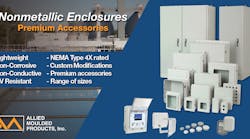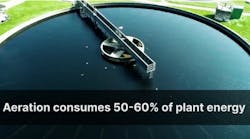With the Stage 2 Disinfectants and Disinfection Byproduct Rule in place, operators are increasingly adopting in-tank aeration to lower trihalomethanes (THMs) in the distribution system. Operators have many technologies to choose from, but each aeration technology comes with its own set of challenges. When it comes to selecting the right THM removal system for a tank, custom design is key. Optimizing system design is critical for predicting and achieving THM removal rates, minimizing energy requirements and calculating long-term operating costs.
The PAX Trihalomethane Removal System (TRS) is a custom-designed, energy-optimized system of mixers, aerators and ventilators that turn ordinary water storage tanks into water treatment systems. Unlike other treatment technologies for lowering THM levels (involving large-scale changes to water treatment plants), TRS can be implemented quickly and cost-effectively, targeting locations in the water distribution system where THM levels are the highest.
PAX Water Technologies partners directly with municipalities to diagnose THM formation and perform a system-wide treatment needs analysis. This data, together with proprietary design and performance modeling software, enables PAX Water Technologies to create in-tank aeration systems that achieve a guaranteed THM removal goal at 50% the energy cost of other THM removal technologies.
Contact Us
PAX Water Technologies
Richmond, CA 94804
866.729.6493
www.paxwater.com
[email protected]



